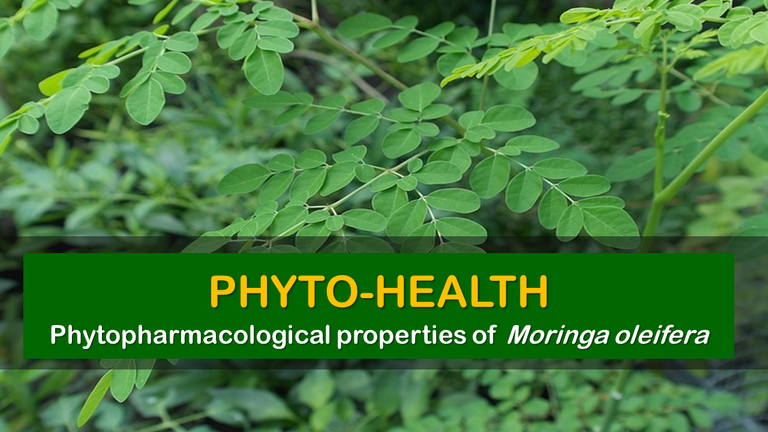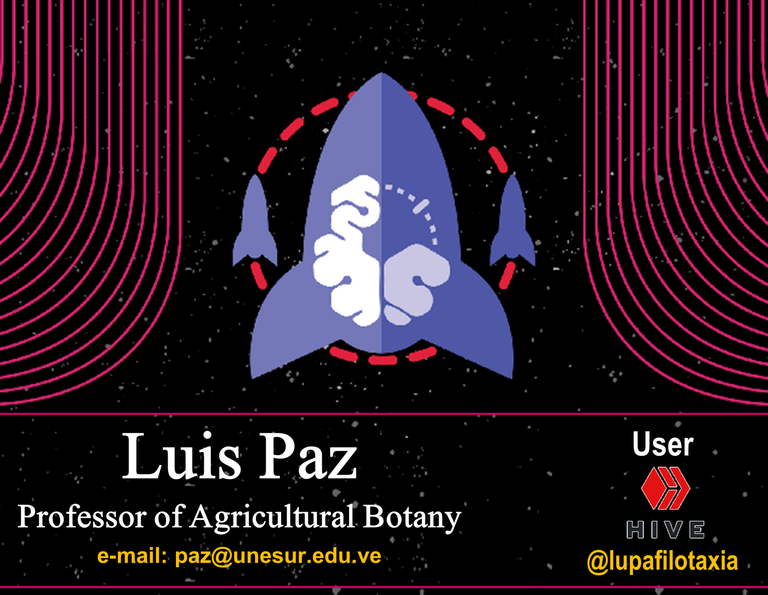PHYTO-HEALTH - Phytopharmacological properties of Moringa oleifera

Dear friends of @Project.HOPE, this will not be an extensive article on phytopharmacological properties as those I usually upload in my thematic series entitled Phytopharmacology, but I will outline a summary of the medicinal potential of Moringa oleifera, or simply Moringa as it is known in most South American countries.
Moringa is one of the plant specimens of greatest ancestral use in Europe, Asia and South America, due to its potential: antioxidant, anti-inflammatory, antibacterial, antiparasitic, antihypertensive, hypoglycemic, hypolipidemic, and antifungal.

Fig. 2 Moringa oleifera exhibits antihypertensive action. Image of public domain, Author: Stevepb, 2015
The phytopharmacological properties of Moringa described in the previous paragraph, are the main reasons that have motivated its widespread use as an alternative medicine, because it is known that Moringa contains nutrients and antioxidants that are vital to maintain in balance the metabolic reactions of our body.
It is important to mention that, according to experimental and clinical research carried out in India, the substances present in the young foliar or meristematic sheets of Moringa oleifera, are characterized by achieving positive effects in reducing and combating osteoarthritis, arthritis, diabetes, as well as various symptoms, including liver, kidney and digestive inflammations.

Fig. 3 Moringa has been shown to improve blood circulation. Image of public domain, Author: Qimono, 2016
The phyto-medicinal benefits that moringa exhibits are so appreciated that it has been qualified as the tree of life, additionally the seeds provide nutrients, vitamins and minerals that can be incorporated into our diet, this because it has acceptable levels of amino acids and proteins of vegetable origin.
In closing I would like to point out that there are experimental results where it is inferred that regular consumption of moringa improves blood circulation, balances the pH levels in our body, which translates into ideal conditions to avoid viral and bacterial infections.
BIBLIOGRAPHICAL REFERENCES CONSULTED:
[1] Khan Z., and Ahmad K A Scientific Review on Phyto-pharmacological Properties of Moringa olifera Lam. Article: Online access
[2] Singh A Ethnomedicinal, Pharmacological and Antimicrobial Aspects of Moringa olifera Lam.: A review. The Journal of Phytopharmacology. 2018; 7: 1: 45-50. Article: Online access
OBSERVATION


0
0
0.000
This plant is actually very well known and highly utilized. Although academic medical science does not recognize it as such, I believe that no plant is accepted by science, which strengthens the belief that in general terms part of the medical curriculum is created by pharmaceutical companies...
Greetings friend @josevass217, the pharmaceutical industry has been responsible for hiding the potential of plant species specifically the action exerted by secondary metabolites in our body, the only certainty is that drugs arise from substances synthesized from secondary metabolites. Thank you for your comment.
Your content has been voted as a part of Encouragement program. Keep up the good work!
Use Ecency daily to boost your growth on platform!
Support Ecency
Vote for Proposal
Delegate HP and earn more
Thank you for your support.
Moringa has many benefits and is a plant from ancient times and it seems that it is only a few years ago that we are discovering it, there are scientific studies that indicate that it serves to level cholesterol in the blood.
I have a friend who took it to control his cholesterol level, I think he did not take it in moderation and reached a point of abuse, because he lost a lot of weight. Thanks @cryptoxicate for visiting the blog.
As we know everything in excess is bad, greetings my friend @lupafilotaxia
Greetings @lupafilotaxia, it is a very complete species due to all the phytopharmacological properties that you show us in your writing. I comment that the characterization of the species was one of the projects that we started from the laboratories of LAQUNESUR, the same we could not finish because of the pandemic, so it is still an unfinished task from the research. Thanks for your contribution
Hello Professor @madridbg, I know first hand the valuable tests that were carried out in the LAQUNESUR laboratories, it is a pity that the university is in complete abandonment and this type of research can not be carried out in the current adverse circumstances for the country. Thank you for commenting.
It is an excellent medicinal plant that is used for various home remedies, its properties are very good but as mentioned without abusing its use, because it can damage some organs such as the stomach and liver.
Greetings friend @Lupafilotaxia
Hello professor @dgalan, the controversial issue when using medicinal plants, is precisely the one referred to the dose, since there is a lack of knowledge about this and people end up abusing and these produce damage to vital organs such as those you mention. Thank you for commenting.
The "moringa" has many properties, the seeds are useful for people undergoing cancer treatments. Do not exaggerate with the seeds because they make you want to urinate a lot if they are consumed daily.
Commented by: @hojaraskita
Hi @hojaraskita, correct I have heard information about the potentiality of Moringa in patients undergoing cancer treatments. Thanks for leaving your appreciation.
Hi @lupafilotaxia
I really knew that moringa had many properties but the information it presents shows us all its benefits.
Excellent publication.
Thank you for sharing
Regards.
Hi @janettyanez, there is a lot of information on the potential of Moringa, and much of that content is based on experimental research results. Thanks for leaving your comment.